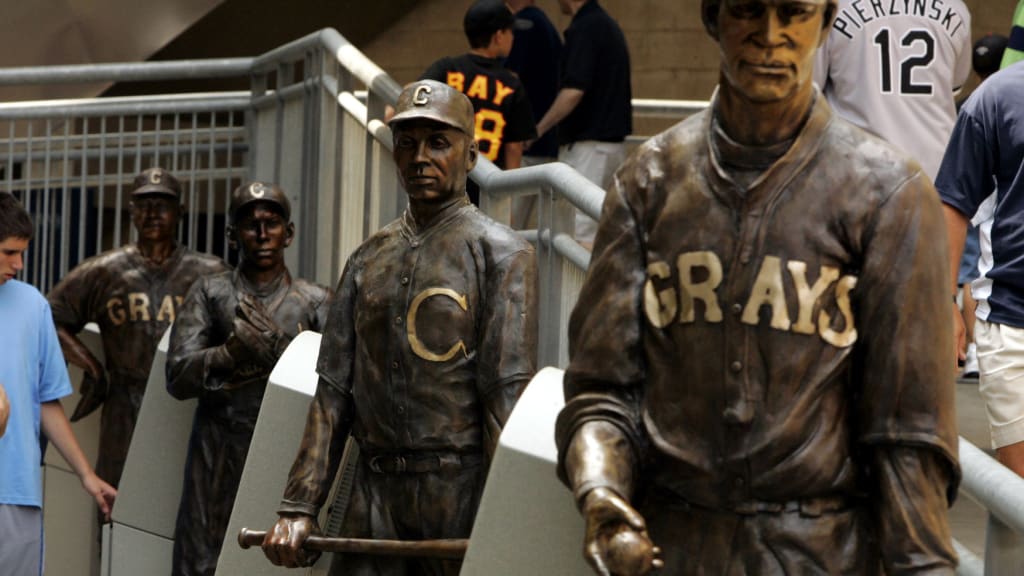
A version of this story was originally published in April 2020.
The Homestead Grays brought championship after championship to Washington, D.C., in the 1940s, establishing the club as one of the most successful teams in the District’s history.
Founded in 1910, the Grays were based in Homestead, Pa., a town in the southern outskirts of Pittsburgh. At the time, the team was comprised of African American steel mill workers who played recreationally on the weekends.
The following year, a future Hall of Famer joined the semi-pro club. Cumberland Posey was one of the Grays’ outfielders, then became their baseball and business manager. By 1920, he was the owner of the Grays -- a post he'd hold until '46 -- and he implemented night games into the schedule.
The Grays were an independent team until 1929, when they joined the American Negro League. When that league ended after just one season, the team again played independently -- winning their first two titles in ’30 and ’31 as eastern champions -- before joining the Negro National League in ’33. The ’31 team, which was highlighted by six future Hall of Famers, has been lauded as one of the best teams of all time.
Forbes Field in Pittsburgh had been the home field for the Grays. In 1940, they began traveling to Griffith Stadium in Washington, D.C., for half of their home matchups when the ballpark was available. The team also was referred to as the Washington Grays and the Washington Homestead Grays. By the time the Grays started playing at Griffith Stadium, they already were a force on the field. They had won two Negro National League pennants in '37 and '38, beginning a stretch of nine titles in 12 seasons (also winning in '40-45 and in '48).
During that time, the Grays added to their legacy by capturing three Colored World Series titles. They won the first World Series championship on Oct. 5, 1943. The following season, they went back to back. On Sept. 24, 1944, the Grays won it all at Griffith Stadium. Four years later, on Oct. 5, 1948, the Grays won their third championship on the road. It also was the final Negro World Series game played.
After that season, the Negro National League and Negro American League merged, and the Grays played independently. The team disbanded in 1950.
Over the years, the Grays were led by not just a future Hall of Famer in Posey, who was inducted in 2006 as a pioneer and executive, but many others, too. The Nats recognized the careers of several members of the team in their Ring of Honor, located in Nationals Park, including:
• James “Cool Papa” Bell, who played pro ball from 1922-46, including his last four seasons with the Grays. The speedy outfielder stole 132 bases, according to the Baseball Hall of Fame (total numbers are not official). A switch-hitter, he collected more than 1,000 hits and 700 runs scored. He was inducted in ‘74.
• Ray Brown, who played 14 seasons with the Grays. Brown was a dominant pitcher on the big stage, as he tossed a one-hitter in the 1944 Negro World Series and a perfect game the following season. Brown had a career record of 92-41, according to the Baseball Hall of Fame, which he was inducted into in 2006.
• Josh Gibson, who had a reputation as a home run hitter in Pittsburgh. He was watching a game in the stands when a Grays catcher sustained an injury, and he got asked to fill in. That's how Gibson began his 17-year career, one that produced more than 1,800 at-bats, 600 hits, 350 RBIs and 100 home runs. In 1972, he became the second player from the Negro Leagues to be elected into the Hall of Fame.
• Buck Leonard, who was a member of the Grays for his entire 17-year career, making him the longest-tenured player with one team in Negro Leagues history. The first baseman's totals include more than 350 runs, 470 hits, 50 home runs and 70 doubles, according to the Baseball Hall of Fame. He is a member of the 1972 Hall of Fame class.
• Jud Wilson, who played for the Grays from 1931-32 and 1940-45 during his 24-season career, which knew no age limits. Wilson hit two triples in a single game during his age-49 season. The third baseman's cumulative batting average is recorded at .351 with a .507 slugging percentage.
"The Grays, obviously, were one of the great black franchises of all time," Dick Clark, a baseball historian who authored several books on the Negro Leagues, told MLB.com in 2007. "The biggest reason is the number of great players that were on the team."
